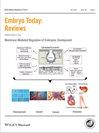下载PDF
{"title":"Nonclinical aspects of venous thrombosis in pregnancy","authors":"Evi Struble, Wafa Harrouk, Albert DeFelice, Belay Tesfamariam","doi":"10.1002/bdrc.21111","DOIUrl":null,"url":null,"abstract":"<p>Pregnancy is a hypercoagulable state which carries an excess risk of maternal venous thrombosis. Endothelial injury, alterations in blood flow and activation of the coagulation pathway are proposed to contribute to the hypercoagulability. The risk for thrombosis may be accentuated by certain drugs and device implants that directly or indirectly affect the coagulation pathway. To help ensure that these interventions do not result in adverse maternal or fetal outcomes during pregnancy, gravid experimental animals can be exposed to such treatments at various stages of gestation and over a dosage range that would identify hazards and inform risk assessment. Circulating soluble biomarkers can also be evaluated for enhancing the assessment of any increased risk of venous thrombosis during pregnancy. In addition to traditional <i>in vivo</i> animal testing, efforts are under way to incorporate reliable non-animal methods in the assessment of embryofetal toxicity and thrombogenic effects. This review summarizes hemostatic balance during pregnancy in animal species, embryofetal development, biomarkers of venous thrombosis, and alterations caused by drug-induced venous thrombosis. Birth Defects Research (Part C) 105:190–200, 2015. © 2015 Wiley Periodicals, Inc.</p>","PeriodicalId":55352,"journal":{"name":"Birth Defects Research Part C-Embryo Today-Reviews","volume":"105 3","pages":"190-200"},"PeriodicalIF":0.0000,"publicationDate":"2015-09-25","publicationTypes":"Journal Article","fieldsOfStudy":null,"isOpenAccess":false,"openAccessPdf":"https://sci-hub-pdf.com/10.1002/bdrc.21111","citationCount":"6","resultStr":null,"platform":"Semanticscholar","paperid":null,"PeriodicalName":"Birth Defects Research Part C-Embryo Today-Reviews","FirstCategoryId":"1085","ListUrlMain":"https://onlinelibrary.wiley.com/doi/10.1002/bdrc.21111","RegionNum":0,"RegionCategory":null,"ArticlePicture":[],"TitleCN":null,"AbstractTextCN":null,"PMCID":null,"EPubDate":"","PubModel":"","JCR":"Q","JCRName":"Medicine","Score":null,"Total":0}
引用次数: 6
引用
批量引用
Abstract
Pregnancy is a hypercoagulable state which carries an excess risk of maternal venous thrombosis. Endothelial injury, alterations in blood flow and activation of the coagulation pathway are proposed to contribute to the hypercoagulability. The risk for thrombosis may be accentuated by certain drugs and device implants that directly or indirectly affect the coagulation pathway. To help ensure that these interventions do not result in adverse maternal or fetal outcomes during pregnancy, gravid experimental animals can be exposed to such treatments at various stages of gestation and over a dosage range that would identify hazards and inform risk assessment. Circulating soluble biomarkers can also be evaluated for enhancing the assessment of any increased risk of venous thrombosis during pregnancy. In addition to traditional in vivo animal testing, efforts are under way to incorporate reliable non-animal methods in the assessment of embryofetal toxicity and thrombogenic effects. This review summarizes hemostatic balance during pregnancy in animal species, embryofetal development, biomarkers of venous thrombosis, and alterations caused by drug-induced venous thrombosis. Birth Defects Research (Part C) 105:190–200, 2015. © 2015 Wiley Periodicals, Inc.
妊娠期静脉血栓形成的非临床因素
妊娠期处于高凝状态,母体静脉血栓形成的风险较高。内皮损伤、血流改变和凝血途径的激活被认为是导致高凝性的原因。某些直接或间接影响凝血途径的药物和器械植入可能会增加血栓形成的风险。为了帮助确保这些干预措施不会在怀孕期间导致不良的母体或胎儿结局,怀孕的实验动物可以在妊娠的不同阶段暴露于此类治疗,其剂量范围可以识别危害并为风险评估提供信息。循环可溶性生物标志物也可用于评估妊娠期间静脉血栓形成风险的增加。除了传统的体内动物试验外,正在努力将可靠的非动物方法纳入胚胎毒性和血栓形成效应的评估中。本文综述了动物妊娠期间的止血平衡、胚胎发育、静脉血栓形成的生物标志物以及药物引起的静脉血栓形成的改变。出生缺陷研究(C辑)105:190 - 2000,2015。©2015 Wiley期刊公司
本文章由计算机程序翻译,如有差异,请以英文原文为准。



 求助内容:
求助内容: 应助结果提醒方式:
应助结果提醒方式:


